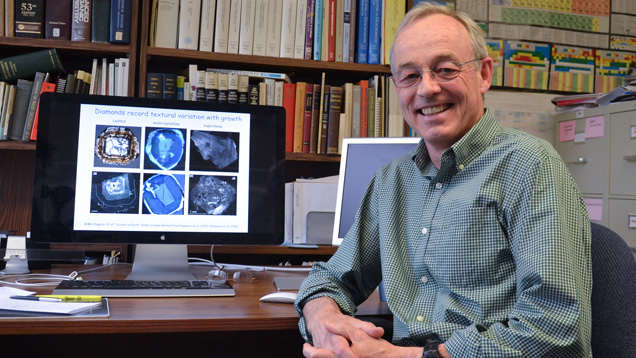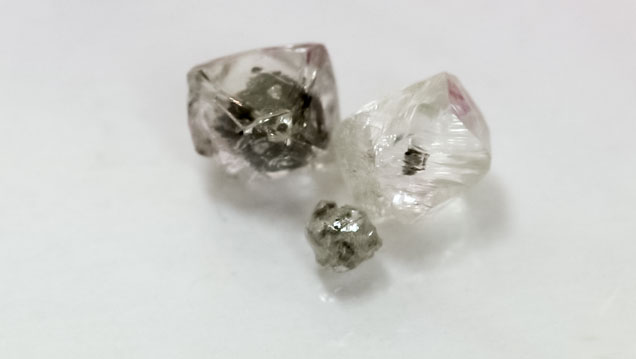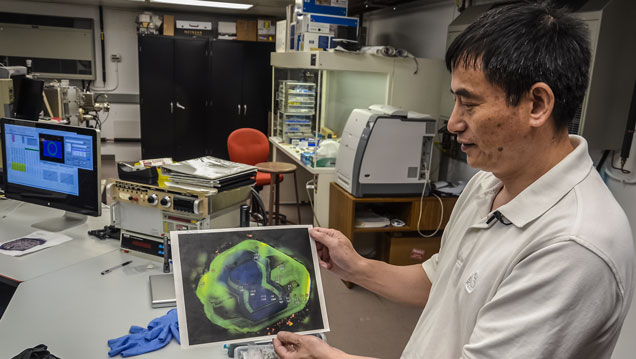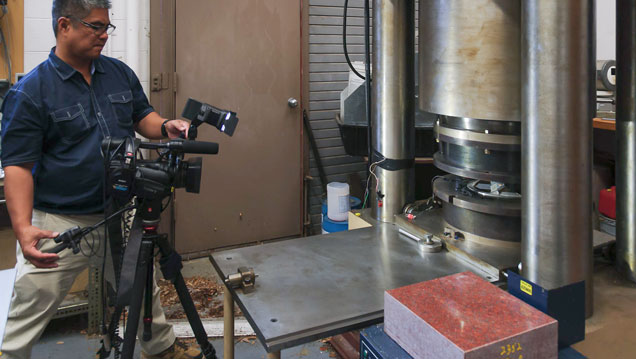Carnegie Research:
Every Diamond Tells a Story
March 6, 2014

One of Shirey’s objectives, as a research scientist, is to get word out about his work into the nature of diamond and its fascinating origins deep beneath our planet’s surface. Diamonds, for Shirey and his co-workers, are unique containers that preserve minerals from deep within the earth. These tiny samples—forged under almost unimaginable pressures and temperatures— make it possible for scientists to peer hundreds of kilometers deep into the earth’s mantle.
At GIA, we also want to tell the geologic story of diamond because it underscores the unique value of the gem as a “special stone.” Shirey’s objectives are complimentary to ours: he knows his research into the age of diamond—and what it tells us about earth history—provides powerful tools for savvy jewelry salespeople to pique a customer’s interest in the gem.
Objectives
We really wanted to set up an ongoing relationship between GIA and the Carnegie Institution so this fascinating topic would be updated in our courses and website to benefit students and the public. The plus for Shirey, and his colleagues at Carnegie, is that we can expose their work to a different, more gem-focused audience.
We approached Shirey to write an article for Gems & Gemology on the knowledge available about diamond’s origin that we published in the Winter 2013 issue. As part of this initiative, a GIA team traveled to Shirey’s home institution, the Department of Terrestrial Magnetism in mid-2013.
We also wanted to document his work on inclusion dating of diamond, which has pushed the age of some diamonds from Canada back as far as 3.5 billion years. The concept that a tiny inclusion captured in a diamond crystal might provide an age of this magnitude—three quarters the earth’s age—is mindboggling.
The implication is that these minerals—passengers in the fabric of the diamond—have lain undisturbed for up to 3.5 billion years and might represent conditions when the earth’s geological processes were very different from today’s.

These tiny diamond crystals contain sulfide mineral inclusions, which Shirey and his coworkers can use to determine their ages. Pedro Padua © GIA, courtesy Carnegie Institute of Washington
“I want to go back in earth’s history to see if the pattern of diamond growth tells us anything unique about the evolution of earth as a planet,” Shirey says.His research involves selecting suitable inclusion-bearing diamonds from working mines, slicing them into sections to examine their growth history, and finally, breaking out the inclusions within them for age-dating studies.
“It would probably drive everybody in the gem business crazy to understand that we take a beautiful rough diamond and slice the center out of it,” says Shirey with a chuckle.
Other Diamond-related Research at Carnegie
We also wanted to provide a snapshot of Carnegie’s other diamond-related research. Two of the Carnegie Institution’s six research departments are based at the same Washington campus: the Department of Terrestrial Magnetism (DTM) and the Geophysical Laboratory.
The DTM was founded in 1904 to map the earth’s geomagnetic field as part of an emphasis on understanding the earth and our planet’s place in the universe. Today, it houses an interdisciplinary team of planetary scientists: astronomers, astrophysicists, geophysicists, and geochemists. They’re discovering planets outside our solar system, determining the age and structure of the universe, and studying the causes of earthquakes and volcanoes. Shirey’s diamond work is a subset of this research, one that illuminates our planet’s depths.
Shirey’s colleague, Dr. Jianhua Wang—a senior research scientist in the same department—investigates the growth structures of diamonds and the sources of the carbon and nitrogen within them. His work—using the Institution’s sophisticated ion microprobe—is able to separate diamonds that crystallized from carbon originally at the earth’s surface, from those that formed from ‘primordial’ carbon that originated deep in the mantle.
“This technique can show you where the carbon in a diamond came from,” Wang says. “Whether it’s from the top—the surface of the earth—or it’s of deep mantle origin.”

Dr. Wang explains the growth structure of a diamond using this cathodoluminescence (CL) image, which reveals its many layers. Dr. Wang’s work on carbon and nitrogen isotopes reveals much about how, and from which carbon sources diamonds grow. Duncan Pay © GIA, courtesy Carnegie Institution of Washington
Just next door, the Geophysical Laboratory—founded a year later, in 1905—examines the physics and chemistry of Earth’s interior. The lab is a world leader in petrology and high-pressure/ high-temperature (HPHT) physics, including the growth of chemical vapor deposition (CVD) synthetic diamond.Valerie Hillgren, a research scientist there, uses HPHT presses not to grow diamonds, but to mimic, on a small scale, the formation of planets. She’s most interested in the separation of a planet’s core from its mantle, and is studying Mercury. “What we’re looking at is how the chemistry of different elements is partitioned between the mantle and the core of a planet, and how that happens under higher pressure,” she says.

Videographer Pedro Padua records the closure of a high-pressure press at the Carbegie Institution's Geophysical Laboratory. Duncan Pay © GIA, courtesy Carngie Institution of Washington
Between them, these two departments have been responsible for a wide range of important discoveries, including mapping the earth’s magnetic field, the first fission of the uranium atom, the concept of “dark matter,” and in the early 1950s, the determination of the age of the earth to within about 2 million years. Before then, the earth’s age was ‘in ambiguo’—Latin for ‘in doubt’—and the margin of error was up to 2 billion years. Carnegie researchers put the age of the earth on a sound footing. Today’s research encompasses all aspects of formation of the earth and solar system by looking at meteorites and radioactive decay systems for dating rocks and minerals.Our aim at GIA is to stay in touch with Carnegie’s diamond-related research and publish regular updates and contributions on the GIA website and in Gems & Gemology.
ABOUT THE AUTHOR
About the authors: Duncan Pay is editor-in-chief of Gems & Gemology, and Pedro Padua is a video producer at GIA content development in Carlsbad, California. Dr. Jim Shigley is a distinguished research fellow at GIA’s laboratory in Carlsbad.
Acknowledgments
The authors would like to thank Dr. Steven Shirey, Dr. Jianhua Wang, and Valerie Hillgren at the Carnegie Institution of Washington D.C., and all their colleagues for their help and courtesy during our visit.



